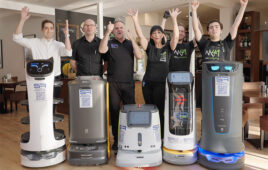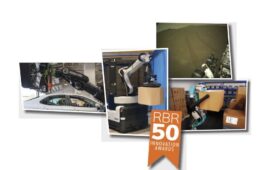Nao and Pepper, the popular humanoid robots from Softbank Robotics, certainly aren’t having trouble finding work. You can now add “teacher” to their resumes as both Nao and Pepper have been helping out at two pre-schools in Singapore.
Pepper has been teaching students at My First Skool Jurong Point about emotions by reading stories, while NAO is telling stories and dancing with students at MY World in Bukit Panjang. This is all part of a six-month trial with the Infocomm Development Authority (IDA) and Nanyang Technological University (NTU) to see how robots can be used to teach children in interactive ways.
According to Today, which first reported the story, “the children were provided with books and videos to get them used to the idea of the robot being the ‘teacher’s assistant,’ rather than just a tool to play with. Now, they look forward to lessons conducted with Pepper, which can tell interactive stories, play memory games, and even perform songs and dances.”
The teachers said the interactive nature of the robots is making it easier to engage students, especially those who might require extra attention. “With Pepper at my side, it’s much easier for me to do that,” said Archana Mandar Godge, a teacher from My First Skool.
NTU, Softbank and the teachers are all working together to develop lesson plans that work with the Nao and Pepper robots that will include pre-programmed responses to match specific lessons. In music lessons, for example, Pepper can simulate different sound effects and rhythmic patterns to make music, while during maths lessons about counting money, Pepper is able to instantly tabulate answers and saving time.
Pepper is already being used by approximately 700 businesses, according to Softbank’s Shohei Fujiwara. Pepper is probably best known for selling iPhones at Softbank mobile stores in Tokyo, but it also joined two cruise lines and is helping a Tokyo half-way house mentor ex-cons in hopes of preventing them from committing future crimes. Nao has held many jobs as well, including hotel concierge at the Hilton McLean in Virginia.
Pepper is finally expected to make its debut in the United States in 2016, focusing initially on businesses and not consumers. Pepper stands just under 4 feet tall and has three omni-directional wheels. Pepper also has a 3D camera to detect passengers movements along with a 10 inch touch screen. Pepper has a tablet in its chest that can be used for engagement and communication, but it can also communicate via speech.
If the trial is deemed successful, these robot teachers could be rolled out to other schools throughout Singapore. There’s already growing evidence that children with autism are more comfortable engaging with robots than with people. A recent study using the socially-assistive robot Milo found that autistic children were engaged 70-80 percent of the time with Milo compared to just 3-10% of the time with traditional approaches.
Jared Peters, co-founder of Origami Robotics, has been an autism educator for twelve years and has spent thousands of hours with kids on the spectrum. Peters joined The Robotics Trends Show to discuss how robots are revolutionizing autism therapy and how this area of robotics will continue to improve.




